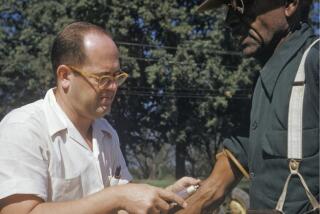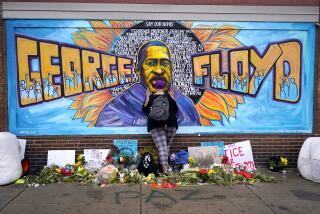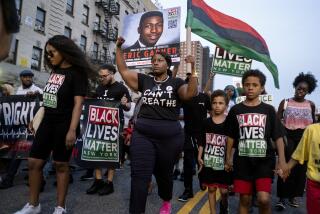You can predict how many blacks are killed by police by measuring the racism of whites, research finds
Some of the stereotypes that prevail in a given geographic area go unrecognized by the people who hold them, and even more often, they’re not acknowledged. But psychologists know that such bias is widespread.
New research finds that when more white people in a community hold African Americans in greater suspicion, that prevailing view may influence police behavior in ways that drive the outsize use of lethal force against African Americans by cops.
It’s a finding likely to stir controversy and spark new interest in the phenomenon of implicit bias — the beliefs and prejudices we hold beneath our level of awareness.
Studied and measured by psychologists since the early 1990s, these unconscious views, which sometimes conflict with the opinions we explicitly embrace, are thought to shape our behavior every day. That influence may be subtle, psychologists say. But it’s never more powerful than when we are under extreme stress or time pressure, as police officers often are.
In a study published Thursday, a trio of psychologists built a map of the racial bias and stereotypes that prevail among whites across the United States. They gathered individuals’ answers to a pair of online tests that measure implicit bias and stereotypes about black and white people. The, they arranged them in geographical clusters according to the recorded location of the test-taker.
When the researchers overlaid those maps with their hot spots of white racial bias and presumption of violent intent against African Americans, they discerned a strong correlation with a very different map: one showing where, in the first nine months of 2015, African Americans were killed by police in disproportionate numbers.
The study, published in the journal Social Psychological and Personality Science, was conducted by psychologists Eric Hehman and Jessica K. Flake of Ryerson and York universities, respectively, in Toronto, and by UC Davis social psychologist Jimmy Calanchini.
It relied upon millions of individuals’ scores on online tests taken between 2003 and 2013. Those quizzes use word associations and time pressure to capture beliefs and associations that people hold and make without always being aware of those biases. The researchers also used a database of people killed by police in the United States (called “The Counted”) that has been compiled by the the Guardian newspaper since the start of 2015.
Of the two measures of community belief — implicit racial bias and a stereotyped view that black people are more threatening than whites — the latter was a better predictor of disproportionate police killings of black people. When many more white people in a given community revealed in tests that they considered black people more threatening than whites, that community was more likely to have rates of lethal force against black people that were out of proportion to their numbers in the local population.
“The idea here is that context influences behavior,” Hehman said. Our behavior is shaped not just by our own beliefs, he said, but by beliefs that are dominant in a community.
“We’re tapping into that and finding the associations,” he added.
Researchers have long believed that demographic factors such as poverty, high crime and employment rates, and a preponderance of idle young men are the most powerful drivers of police officers’ use of lethal force. Because black communities typically have higher rates of all those factors, outsize rates of police killings in those communities are to be expected, many believe.
The new research does not cast doubt on that explanation. But it does offer evidence that a psychological factor — prevailing racial attitudes in a community and police officers’ embrace of those views — may be a contributor too.
“The present research provides evidence that prevailing racial attitudes and beliefs in a region are related to life-or-death decisions that police officers make in the line of duty,” the researchers wrote. Other studies have found that an individual’s biased racial associations may influence life-or-death decisions. This study, the authors contend, extends that finding to whole communities.
By now, Hehman said, police officers’ disproportionate use of lethal force against African Americans has been pretty solidly established.
“We still don’t understand all the factors that are giving rise to this phenomenon,” he added. “This is really a first step in examining this. It’s really been impossible to do this before without data. Hopefully, over time and with more research, we can do better.”
MORE IN SCIENCE
Is it Alzheimer’s or another kind of dementia? Scientists have a new way to tell the difference
CTE was nearly ubiquitous among former NFL players who donated their brains to science
Fake news about statins is discouraging the use of these life-saving drugs, expert warns







